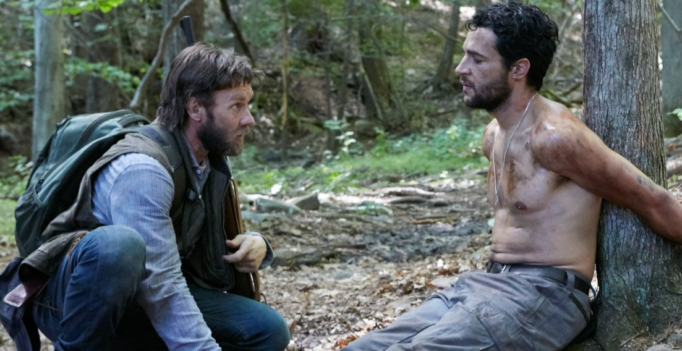There is a tradition in American horror cinema of making a short film with a lot of effects and minimal plot to be eventually used as a calling card. It seems like this practice has found its way into the feature length semi-mainstream. At least, that’s the only explanation for the existence of Trey Edward Shults’ It Comes at Night, a film which shows the director’s abilities as a horror filmmaker – including his great gift for dread – yet leaves the viewer wanting more.
It Comes at Night tosses the viewer directly into the centre of a post-apocalyptic world, where a disease is afflicting people and one family attempts to survive in the forest. This is perhaps the first issue, as there is no exposition and no proper beginning. This ambiguity may be a plus for certain viewers, but there really isn’t much that is explained between the beginning and the end, expecting the viewer to not question anything and be taken away by the immediate.
This is not always a bad thing. As mentioned earlier, the director is a master of dread, frequently terrifying the viewer with the thought of what is at the end of that hallway or behind that door. But, this also the film’s shortcoming: there is nothing behind that door, at the end of that hallway, or pretty much anywhere. When there is no attempt at exposition, these scenes in between moments of dread come off as pointless at best and confusing at worst.
For people who like atmospheric horror, It Comes at Night could be decent. As a straightforward horror film, a success would require several changes: abandonment of the mumblegore aesthetic, the removal of about twenty minutes of dead air, and something resembling a more traditional plot structure.
And as a final nitpick: it does not, in fact, come at night!
**********
Do You Tweet? Follow These Tweeple:
Shahbaz Khayambashi: @Shakhayam





Be the first to comment